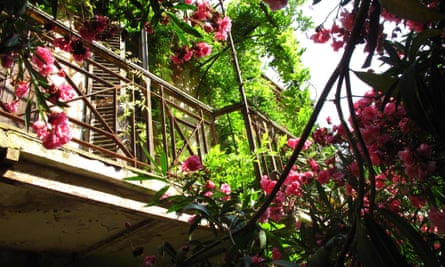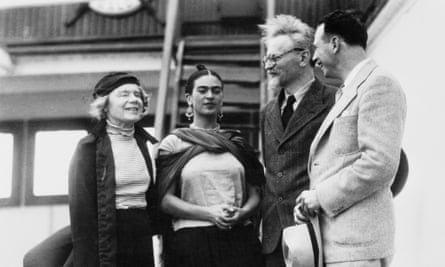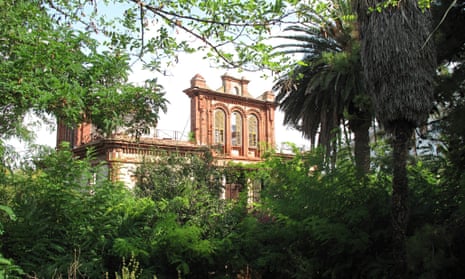Its lobster pool has been lost to the waves, the walls are cracking and its roof has fallen in, but the historical pedigree of the Yanaros mansion has only strengthened over the years.
For four years from 1929 one of the world’s most famous revolutionaries, Leon Trotsky, newly exiled from the Soviet Union, called the sprawling complex on an Istanbul island home. Now it is up for sale to Trotsky enthusiasts or wealthy historians with $4.4m to spare.
Along with the history, the buyer will get the ruined remains of an 800 sq metres home – more capitalist retreat than communist base of operations. It is set in nearly an acre of sprawling seaside grounds, with its own pier, on picturesque Büyükada Island, where cars are banned but the bustle of downtown Istanbul is just a short ferry ride away.
That distance from the mainland apparently gave Trotsky some sense of security from the assassins he knew Moscow was sending to hunt him down, and he spent longer in Turkey than he would anywhere else after leaving his home. He later moved through France and Norway before settling in Mexico. There he reportedly had an affair with the painter Frida Kahlo before he was murdered in his study with an ice-pick in 1940.
It was in his island villa that he wrote his famous autobiography My Life and his doorstop History of the Russian Revolution – one current paperback edition weighs in at more than 1,000 pages – among other books, local historians say.
But anyone with dreams of penning a masterpiece while staring out at the views that inspired Trotsky will also have to grapple with substantial pressure from the local government and amateur historians to turn the site into a museum.

“Whoever is willing to buy this house has to be from a family of philanthropists like the Medici of Italy, to have lots of money, to be devoted to art, so they can restore the house and present it for culture lovers,” said Atilla Aytaç, mayor of the Adalar district which includes the island of Büyükada. Restoration of the ruin will cost at least £600,000, local people and estate agents estimate, but since the present owners bought it a new development plan for the area has officially designated the 1885 mansion a “cultural centre area”, so it can’t be used as a private home.
“The owner bought the house before the [development] plan was laid out … it is now very difficult for him to sell this house,” Aytaç said.
The house has been put on the market sporadically over the last few years while the owners appealed against that ruling. After new advertisements went up online, one of the estate agents denied that the property’s only future was in public hands.
“Three years ago, the owners met with cultural authorities to turn this place into a cultural centre, but they couldn’t make [a deal],” says Netsi Sadi, a broker at the Realtybank estate agency. “As a private person owns this house, it can be sold to another private person.”
Sadi is a high-profile figure in the Istanbul property market, but she has struggled to offload the villa despite her reputation. There have been several interested buyers, including at least one from abroad, she said, but they were unhappy that the property could not be redesigned: “You have to keep the original facade of the house, you can only restore it: that’s why it is difficult.”

Local historians are frustrated that while the owners have spent years – and also plenty of money – appealing that ruling, they have let the house decay dangerously.
“The roof was still there when the house was sold for the last time four or five years ago, although the previous owners didn’t take care of it either,” said Halim Bulutoglu, who has just launched the Trotsky House Initiative with Sinan Özbek, a professor of philosophy.
They want to raise restoration funds for a site that they say already attracts at least 10,000 people to the island each year, where they are greeted only by a closed gate warning of mortal danger if they venture into the ruins. A museum could draw 10 times that many, the two campaigners believe.
Both are too young to have met Trotsky, who left in 1933, but have researched his time on the island and say that the Russian kept largely to himself. Besides his second wife Natalia and his young son, his main confidants there were his French secretary and a Greek cook and fisherman.
“Trotsky used to go with his fisherman friend fishing at 4.30am, to see the sunrise,” Özbek said, adding that he had a study surrounded by bougainvillaea where he wrote most of his books: “When he left Büyükada he felt very emotional.”

Comments (…)
Sign in or create your Guardian account to join the discussion